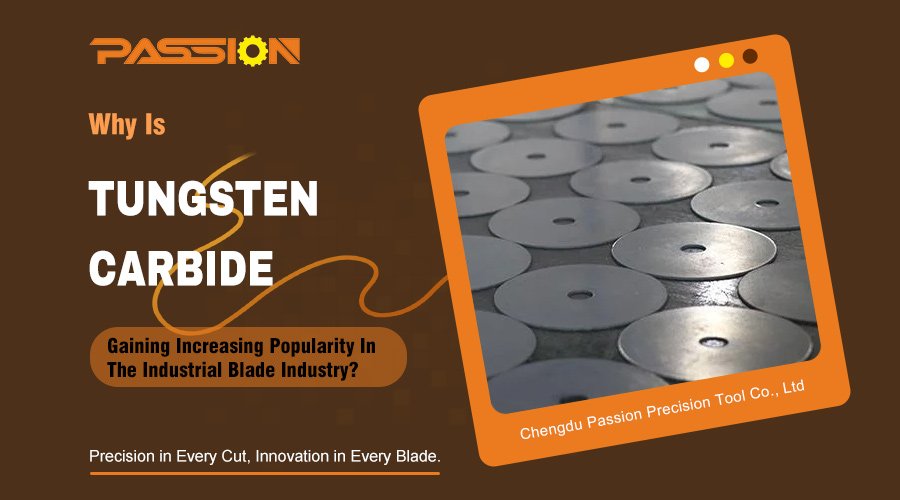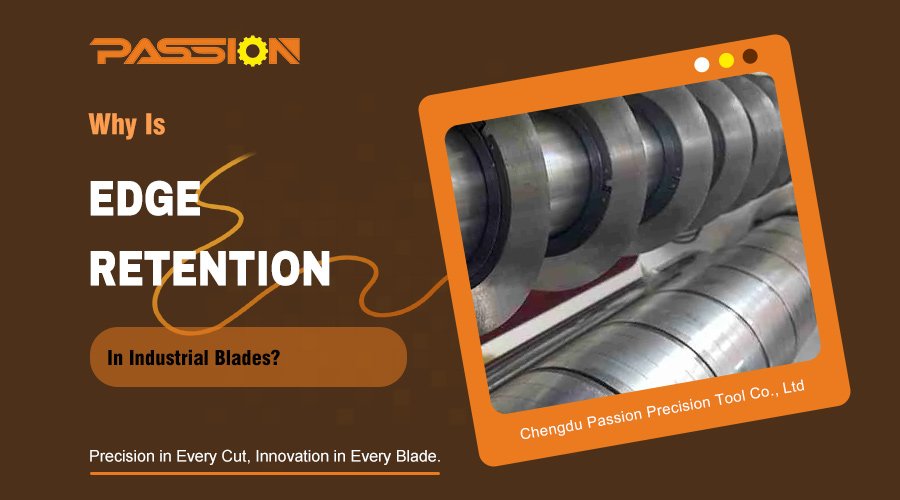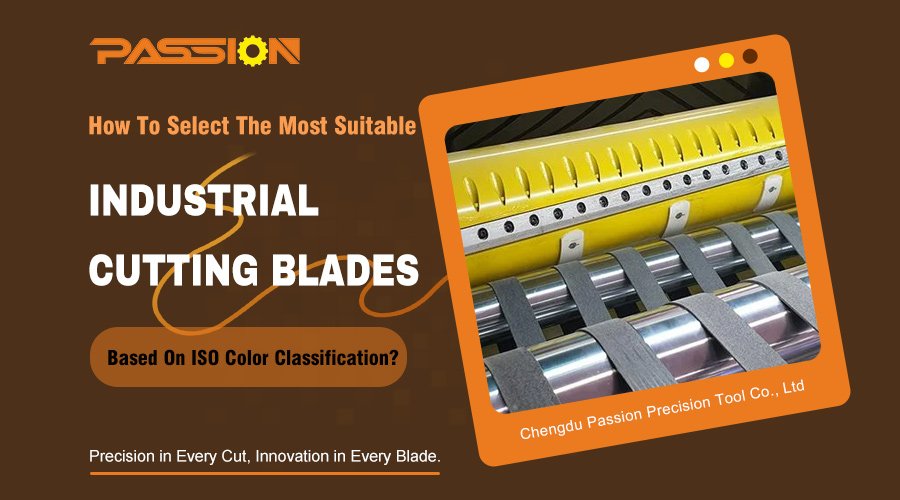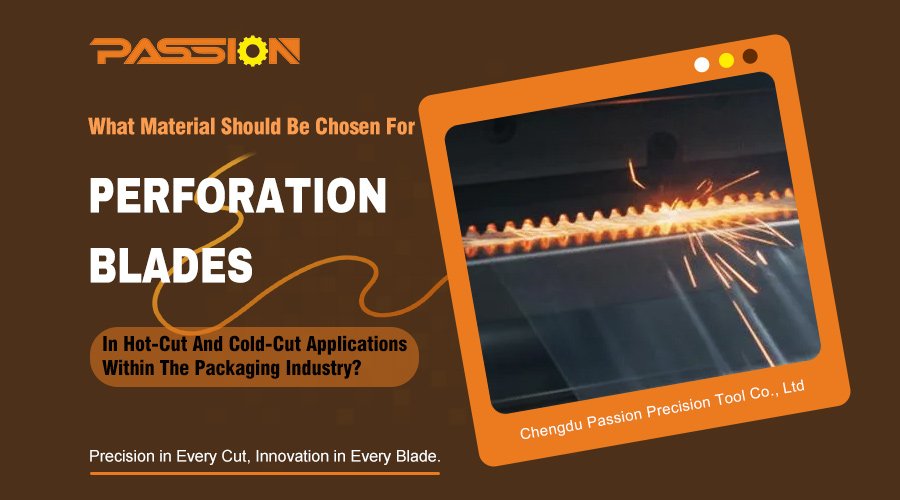In modern industrial manufacturing, the performance of blades often determines the efficiency and quality of the entire production process. Whether it’s a packaging line cutting food film at high speeds or microelectronic processing requiring extreme precision, blades must be stable, sharp and durable. However, in the long term, many companies will find that even if the blade material is excellent and the heat treatment is in place, the cutting performance may still be limited by the poor surface condition.
This is where the mirror finish process becomes a key part of improving blade performance. It is not just a “bright finish”, but also a high-precision machining technology that optimizes friction, corrosion and fatigue resistance by changing the microstructure of the blade surface.
Next, we will from the concept, processing methods, performance impact, key parameters, application cases to the control of common problems, a systematic analysis of the industrial blade mirror process, and mirror process in different areas have shown great potential for cost reduction and efficiency, quality assurance.
What Is The Mirror Process?
Mirror Finishing Process (Mirror Finishing Process) is a mechanical, chemical, physical or electrochemical means, so that the surface of the blade to achieve a very low roughness (Ra value can usually be less than 0.02 μm), and mirror reflection effect of the processing method. It not only improves the appearance of the blade, but also significantly improves its functionality.
In metallurgy, surface quality directly affects the friction characteristics, corrosion resistance, fatigue resistance and cleanliness of the part. For industrial blades, these performance parameters mean:
- Less cutting resistance, reducing energy consumption.
- Longer service life, reducing replacement frequency and downtime costs.
- More precise cutting results, reducing product defects.
In terms of the machining process, blades usually go through the steps of blank forming, heat treatment, rough grinding, finish grinding, mirror finishing, cleaning and protection. The mirror finish process is the final stage of the finishing process and is a critical step in determining the final surface properties of the blade. For more information about industrial carbide blade manufacturing, you can check out this article “Manufacturing Process Of Tungsten Carbide Blades”.
The core objective of the mirror finish process
- Elimination of surface defects: Including grinding marks, micro-cracks, machining stress zones.
- Reduce surface roughness: Allow significant reduction in the coefficient of friction.
- Form a dense protective layer: To improve corrosion and wear resistance.
In the food, medical, electronics and precision machinery industries, mirror finishing is no longer optional, but has become a standard technology for high-end blades.
Common Methods Of Mirror Process And Applicable Industries
Different blade materials, shapes, hardnesses, and usage environments greatly affect the selection of mirror processing methods. In actual production, we usually combine the cost, processing efficiency, surface requirements for comprehensive consideration, the following four methods are the most common and mature process route in industrial blades.
1. Precision Mechanical Polishing
Process Principle
The use of high-speed rotating or reciprocating motion of the polishing wheel, abrasive cloth, with the polishing paste containing chromium oxide, aluminum oxide and other micro-particles, the surface of the blade to carry out continuous micro-cutting and plastic deformation, so as to eliminate the microscopic bumps, to obtain the effect of a mirror surface.
Process Points
- Combination of rough polishing and fine polishing, granularity is refined step by step (e.g. 800# first, then to 2000# or even finer).
- Polishing pressure and speed should be precisely controlled to avoid surface overheating or scratches.
Applicable Industries
- Paper slitting knives: Reduce paper cutting burrs and improve the neatness of paper cutting.
- Plastic film knives: Prevent static adsorption during cutting.
- Food processing knives: Easy to clean, reduce the risk of bacterial residue.
Advantages And Disadvantages
Advantages: High controllability, good processing accuracy, suitable for most metal blades.
Disadvantages: High labor cost, not suitable for batch processing of complex shapes.
2. Electropolishing
Process Principle
The blade is placed in the electrolytic solution as an anode, and the raised part of the surface is preferentially dissolved by the DC current, thus obtaining a flat and bright surface. Commonly used for stainless steel and high alloy steel blades.
Process Points
- The temperature of the electrolyte is controlled in the optimum range (e.g. 45-65°C).
- Current density and time are precisely matched to the material properties.
- Thorough cleaning is necessary after polishing to prevent electrolyte residue from corroding the surface.
Applicable Industries
- Medical blades: Reduce tissue damage and increase the speed of incision healing.
- Food industry cutting blades: Improve corrosion resistance and hygiene.
- Chemical fiber cutting blades: Significant increase in acid and alkali resistance.
Advantages And Disadvantages
Advantages: Suitable for complex shapes, high efficiency in batch processing.
Disadvantages: High investment in equipment and chemical management.
3. Ultrasonic Polishing
Process Principle
The use of ultrasonic transducer converts electrical energy into high-frequency mechanical vibration, driving the abrasive material and the surface of the blade in high-speed relative motion to achieve uniform polishing. Particularly suitable for super-hard tools and micro-fine parts of the treatment.
Process Points
- The vibration frequency is often between 20-40kHz.
- The grinding media should be selected with suitable grain size and shape to avoid micro-cracks on the surface.
Applicable Industries
- Precision die cutting knife: Electronic components, flexible circuit board cutting.
- Optical cutting knives: Reduce edge chipping of optical materials.
Advantages And Disadvantages
Advantages: Low thermal influence, suitable for heat-sensitive materials.
Disadvantages: Relatively low processing efficiency, suitable for localized finishing.
4. Magnetic Polishing
Process Principle
Utilizes a magnetic field to control magnetic particles containing abrasive to form a uniform flow of polishing brushes on the surface of the blade for gentle and highly uniform polishing.
Process Points
- The size of the magnetic abrasive is adjusted to the blade material.
- The strength of the magnetic field and the speed of the flow directly affect the polishing efficiency.
Applicable Industries
- Shaped knives: Packaging machine knives, aerospace cutting knives.
Advantages And Disadvantages
Advantages: High polishing uniformity, suitable for batch processing of complex shapes.
Disadvantages: High magnetic requirements, non-magnetic materials require special treatment.
The Effect Of The Mirror Process On The Performance Of The Blade
The effect of the mirror treatment on the blade is much more than a “bright surface”, it is directly related to the physical performance and life of the blade in the process of use.
1. Reduced Coefficient Of Friction
The mirror surface reduces the resistance of the blade to contact with the material being cut. For example, in cutting 0.02mm thick PET film, the friction coefficient of the blade without mirror treatment is about 0.35, and after mirror treatment can be reduced to about 0.18, the cutting process is more smooth and less heat.
2. Enhanced Corrosion Resistance
Electrolytic polishing or mechanical fine polishing removes microscopic defects on the surface and forms a dense passivation film on the metal surface, and the salt spray resistance test time can be extended by 30%-50%.
3. Enhanced Fatigue Resistance
Surface defects are the starting point of fatigue cracks. By eliminating these defects, the mirror process makes the blade less likely to break when subjected to cyclic loads.
4. Stable Cutting Quality
In paper cutting and optical film processing, mirror blade can significantly reduce burrs and scratches and improve the yield rate. For example, in a film factory, the yield rate has increased from 95% to 99.2%.
5. Improved Hygiene And Cleanliness
Mirror blade is not easy to adhere to organic residues, cleaning cycle is extended, reducing the number of downtime, especially important in food processing.
6 Key Process Parameters For Mirror Finishing
The effectiveness of mirror finishing is closely related to several controllable parameters:
Target Value For Surface Roughness (Ra)
- High-precision blades usually require Ra ≤ 0.05 μm.
- Blades for the food and pharmaceutical industries require even higher values, up to Ra ≤ 0.02 μm.
Excessive roughness increases friction and adhesion and reduces the machining value.
Polishing Pressure And Speed
- Too much pressure may cause surface scratches or deformation.
- Too little pressure is inefficient.
It is recommended to use a constant pressure system and to realize fine polishing by reducing the pressure step by step.
Abrasive Grit
- For primary polishing, use #800 to #1200 grit.
- For fine polishing, ultra-fine abrasives of #2000 and above, or even 0.05 μm alumina polishing solution, are used.
Polishing Media And Lubricants
- Mechanical polishing mostly uses oil-based polishing fluid or emulsion to reduce frictional heat.
- Electrolytic polishing requires control of the pH, temperature and current density of the electrolyte.
Temperature Control
- High temperatures can cause tempering and softening of blades, especially high carbon steel blades.
- Cooling measures, such as circulating coolant, are required during the polishing process.
Processing Time
- Excessive polishing time can cause rounding of blade edges, affecting sharpness.
- Processing time needs to be controlled while maintaining finish.
Typical Application Scenarios For Mirrored Blades
Mirrored blades are widely used in several industries due to their outstanding performance:
Tobacco Industry
- The tobacco cutting knife has been mirror-finished to effectively prevent tearing during the cutting process, ensuring uniform tobacco length and neat cuts, which helps to stabilize cigarette combustion.
- The mirror finish prevents tobacco powder from adhering to the surface, improving the cleanliness and operating efficiency of the production line.
Food Processing Industry
- Cutting frozen meats, seafood, candies, chocolates, etc.
- Mirror blades reduce ingredient adhesion and avoid cross-contamination.
Medical And Pharmaceutical Industries
- Surgical blades, slicing knives, capsule cutting knives, etc.
- Highly clean surfaces reduce bacterial growth and increase safety.
Packaging Industry
- Film cutting, paper slitting, tape cutting.
- Mirror finish prevents material stretching and burrs.
Printing And Paper Industry
- High speed rotary slitting knives, cross cut knives.
- Ensure neat cuts and improve productivity.
Electronic And Optical Industry
- Flexible circuit board, optical film cutting knife.
- Avoid scratches and contamination during the cutting process.
High-End Textile Industry
- Cutting ribbons, fibers, non-woven fabrics.
- Improve cutting precision and prevent fiber pulling off.
Common Problems And Control Measures For Mirror Finishing
Surface Scratch Problems
Causes: Uneven abrasive grain size, inclusion of hard particles, polishing cloth contamination.
Solution: Strict filtration of polishing liquid, regular replacement of abrasives and polishing cloths, replacement of abrasives of different grain sizes in stages.
Brightness Can Not Meet The Requirements
Reason: Too much or too little polishing pressure, improper selection of abrasive grain size.
Solution: Optimize the pressure curve, use ultra-fine abrasives in the fine polishing stage, and increase the cross-polishing path.
Cutting Edge Rounding
Reason: too long polishing time, improper polishing method.
Solution: Use directional polishing for the edge area and limit the processing time.
Surface Burns Or Discoloration
Cause: High temperature rise during polishing.
Solution: Use low-speed high-frequency polishing mode, strengthen the cooling system, and control the polishing time.
Uneven Electrolytic Polishing
Reason: Uneven distribution of electric field, complex shape of blade surface.
Solution: Optimize the fixture design to make the electrolyte flow evenly; adjust the current density.
Poor Batch Stability
Reason: Different batches of abrasives, equipment status, operating habits.
Measures to solve the problem: Establish standard operating instructions (SOP), fix the equipment parameters and process flow, and carry out the first inspection of the batch.
Mirror finish plays an irreplaceable role in the production of industrial blades, not only in terms of appearance, but also in terms of its profound impact on blade performance, longevity and experience. From food processing to medical surgery, from packaging slitting to high-precision electronics manufacturing, mirror blades are becoming the preferred choice of high-end manufacturing industries due to their excellent cutting performance and reliability. In the future, as automation and smart manufacturing technologies evolve, the mirror process will become even more efficient, controllable and valuable in a wider range of applications.







